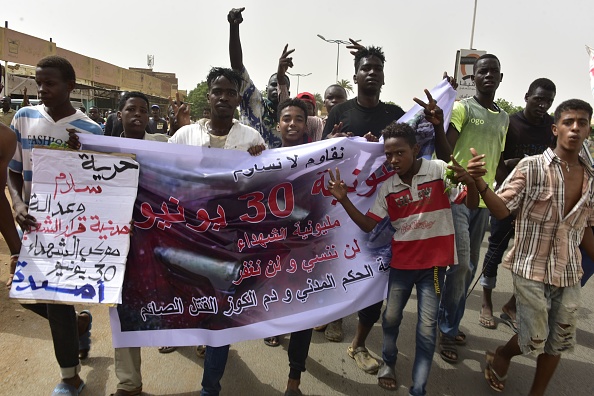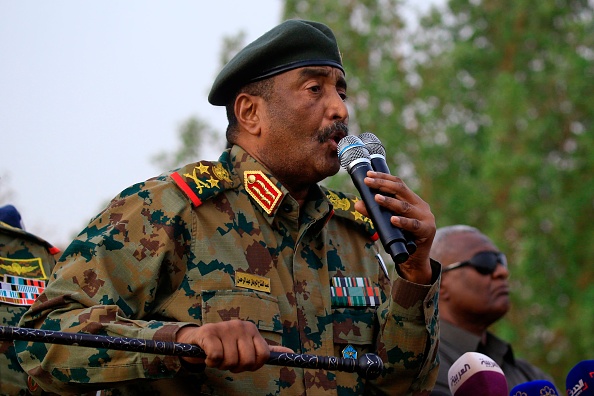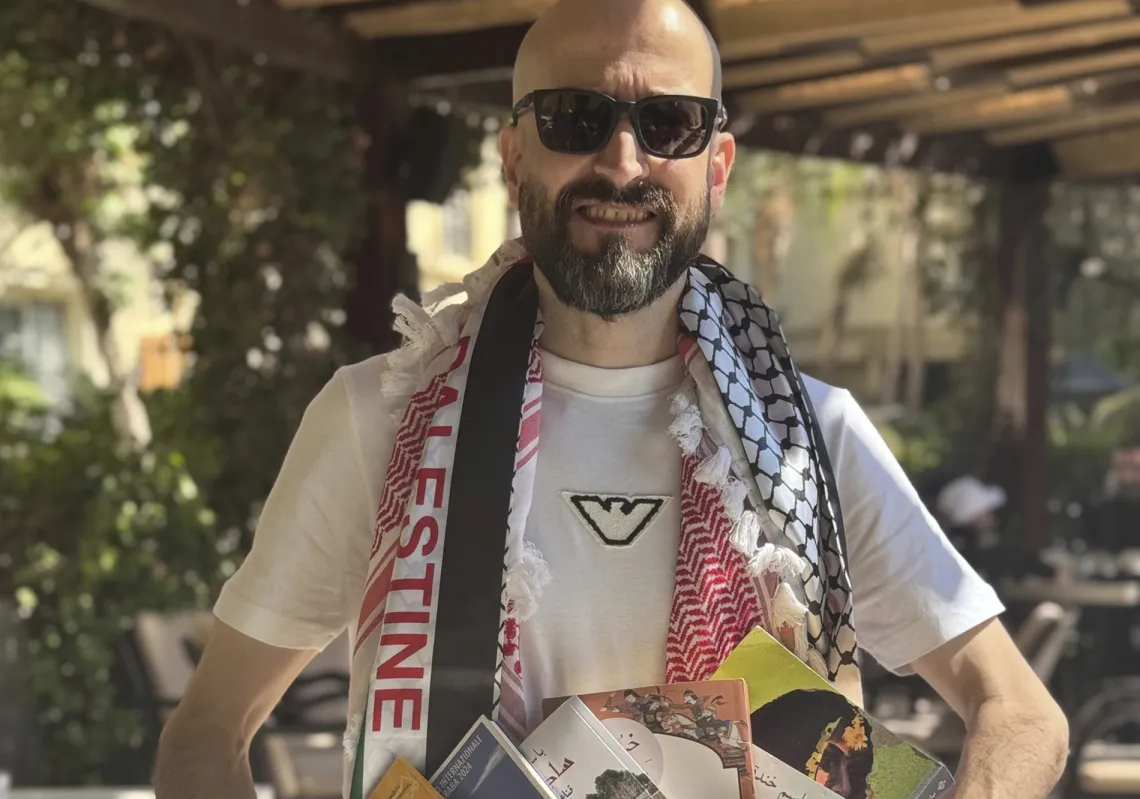With support from the National Islamic Front (NIF), Bashir’s forces ended Sudan’s short-lived democratic system overnight, as he replaced the elected government with a Revolutionary Command Council for National Salvation (RCCNS), which backed Bashir to be the country’s new leader. Bashir portrayed himself as the country’s savior who would unite all the peoples living in Sudan; however, his legacy shows that he was anything but. More critically, his legacy has planted the seeds for the nationwide rebellion which took place 30 years after his power grab.
KEEPING SUDAN UNITED
Taking the helm during the Civil War, Bashir had two goals in mind mainly ending the war and keeping Sudan united. However, the county’s new military leader failed to swiftly end the war as the struggle between his forces and the SPLA waged on for nearly two decades. During this time, Bashir systemically fought against the Southerners and prevented provisions such as education and healthcare to reach them. Furthermore, Bashir was adamant in preventing International Organizations from delivering aid to the starving and displaced South Sudanese. Bashir’s actions prompted international condemnation and sanctions, and the UN pressured the government to end its diabolical acts in the early 2000s. The pressure worked and by 2003, the Sudanese regime started negotiating a peace deal with the Sudan People’s Liberation Movement (the political wing of the SPLA), which was finally signed in 2005. Under the agreement, Southern Sudan would get back its autonomy, and six years later its residents would get to vote on an independence referendum. The South Sudanese did indeed vote for the future of their nation in 2011, and the overwhelming majority of the voters favored separating from the north. Despite his violent past, Bashir’s regime respected the result of the referendum and South Sudan was officially founded as a new state six months later.
In addition to his atrocities in the South, most of Bashir’s most notable war crimes were committed against civilian populations residing in the Western Sudanese region of Darfur. During the 2000s, the Justice and Equality Movement (JEM) started to prominently rise in Darfur; the group is a populist one and has called for a greater share of power in Sudan, and more justice and equality in the country. JEM has long contended that the government in the Northern region has a monopoly over the country’s wealth, as a result, has left populations in other regions (particularly the South and the West) impoverished. The group is also Islamist and has used the ideology to call for greater justice among the wider Sudanese nation. The regime’s violence in Darfur started in 2003, after an SPLA insurgency attack on El Fasher airport in North Darfur, this persuaded the government that a radical solution was needed to put an end to anti-regime groups located in the West. Government forces and its allies the Janjaweed militia subsequently carried out attacks on civilians in Darfur, particularly those belonging to the Fur, Masalit and Zaghawa ethnic groups which the regime thought had close ties with the JEM forces. The International Criminal Court (ICC) has charged Bashir with several crimes against humanity, as his forces have allegedly pillaged these groups’ properties, systemically murdered them, raped women living in these regions and forcibly transferred civilians out of the region. Bashir’s forces are also accused of contaminating water sources in the region and encouraging other tribes of occupying homes in which the Fur, Masalit, and Zaghawa previously resided in. The ICC has also gone as far as to accuse al-Bashir of genocide and has been calling for his arrest since 2009. If Bashir’s actions in the South and West indicated anything, it’s that he will not tolerate any form of rebellion and will quell any such acts with an iron fist.
WITH FRIENDS LIKE THESE
Throughout his reign, Bashir has been known to ally himself with individuals who have done more harm to him than good. For instance, he was a close ally of the National Islamic Front (which later became the National Congress) leader Hassan Abd Allah al-Turabi, and during the early years of the Bashir regime al-Turabi effectively acted as the ideological wing of the regime. As a staunch Islamist, al-Turabi placed fundamentalists in important government posts and imposed Sharia law in the northern region of the country. Al-Turabi was also instrumental in isolating Sudan in the region as more countries started viewing the regime a destabilizing force. The first major incident that vilified the regime came during the Gulf War, which saw Bashir's government support Saddam Hussein’s forces, moreover, Bashir would go on to oppose the US-Arab coalition that fought to liberate Kuwait from Hussein’s clutches. Another incident that painted the regime in a negative light was Al-Turabi’s assistance to the Egyptian Islamist militants who attempted to assassinate former Egyptian President Hosni Mubarak in Addis Ababa back in 1995. Naturally, this created a rift between the two North African states which have historically shared a close alliance. The incidence was also the major reason behind the UN’s sanctions against the regime one year later. Bashir would eventually fall out with Al-Turabi in 1999 and since then the latter has faced a series of imprisonments due to several reasons including alleged ties with JEM.
LACK OF DEVELOPMENT
It can be safely said that most of Bashir’s presidency has been confined to maintaining his grip on power which in turn consisted of increased military operations. In spite of the conflicts, Sudan has seen significant economic growth during Bashir’s presidency, as by 2010 it became the world’s 17th fastest growing economies. Most of Sudan’s economic growth can be attributed to its oil exports; however, the abundance of oil did not work to Bashir’s advantage. As previously stated, one of Bashir’s priorities was keeping the country united, something he failed to do and unfortunately for him, 80 percent of Sudan’s oil fields were situated in the south. As a result, upon the foundation of South Sudan, the government lost access to most of those oil fields. Despite the presence of other resources such as natural gas, gold, silver, chromite, asbestos, manganese, iron, nickel, tin and aluminum, the regime has done little to extract them for export. Moreover, the regime has failed to diversify its agricultural sector which was the main source of its GDP before the 2000s. Even before its vast oil revenue loss, Sudan’s economic growth did lead to human development since the regime focused most of its development measures on its capital, Khartoum, and has largely neglected other cities and regions. According to a 2014-15 study by the African Development Bank Group, less than 20 percent of the those living in the Northern Region and only 29 percent of those living in Khartoum fall below the poverty line. Meanwhile, other non-northern regions were not faring better, for instance over 60 percent of those living in Central Darfur and West Darfur, respectively fell below the poverty line. As previously noted, the regime’s neglect of those regions was the major factor behind the rise of insurgents that viewed the ruling government as unjust and corrupt.

THE LAST STRAW
In hindsight, the regime should have predicted an eventual people’s rebellion as the rise of insurgents in impoverished regions should have served as warning against growing national dissatisfaction. It shouldn’t then come as a surprise that the regime’s announcement of food and energy price hikes in late 2018 led to a nationwide uprising. What is surprising though is the fact that some of the major cities that started the protests were the ones that were relatively doing better, for instance, the River Nile state, one of the areas with only 20 percent poverty rate was a major protest hub. Meanwhile, poorer areas such as the Red Sea state and North Korfodan were other states that served as protest points.
The 30th anniversary of Bashir’s coup has recently passed, and to mark it protestors all over Sudan held demonstrations against the current ruling transitional government led by General Abdel Fatah Burhan. Like most of the country’s history, the months-long protests have been violent as clashes between security forces and demonstrators have led to the loss of thousands of lives. If the current ruling coalition is to survive then it must do what it can to avoid the mistakes that the Bashir regime did during his tenure, namely seek ways to economically develop the country and not just the North and Khartoum, furthermore, they must seek reconciliation with opposition groups that are willing to negotiate. Finally, the transitional government must stick to its 3-year timeframe of paving the way for a democratically elected government.










